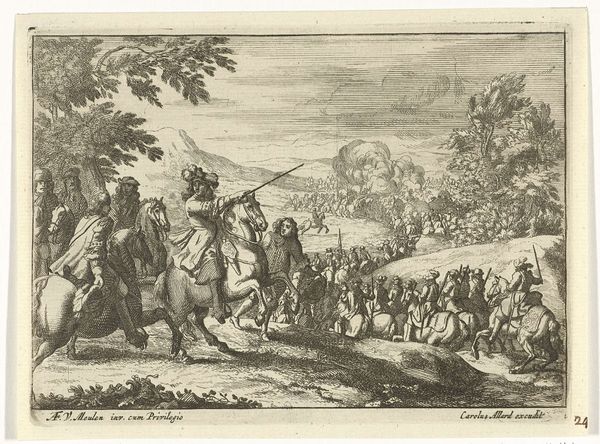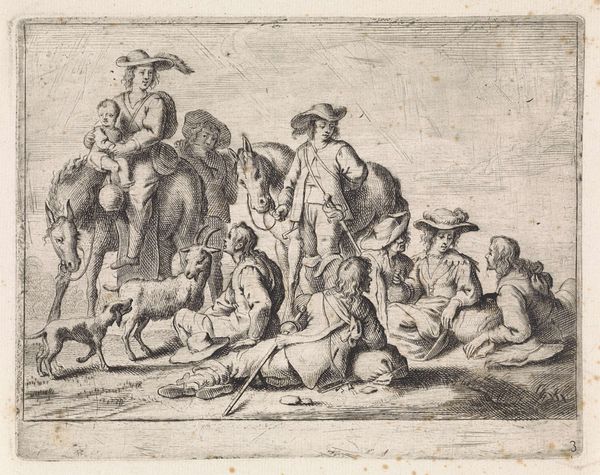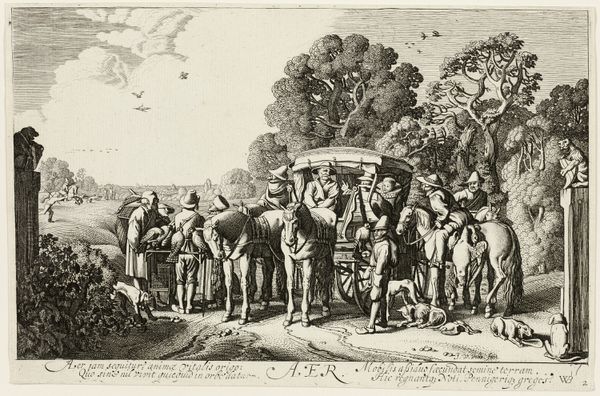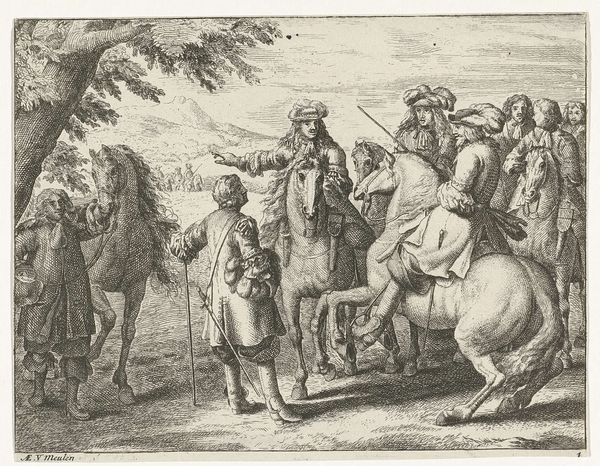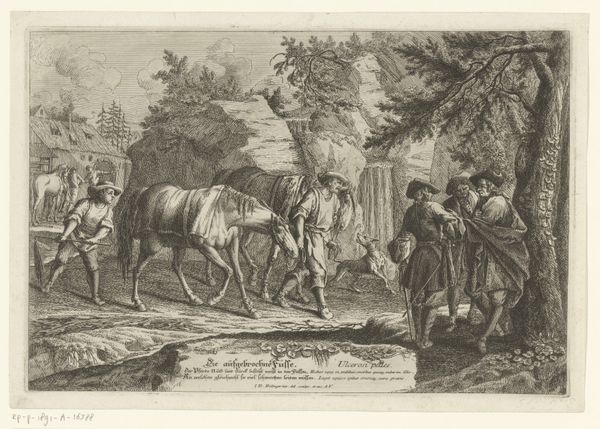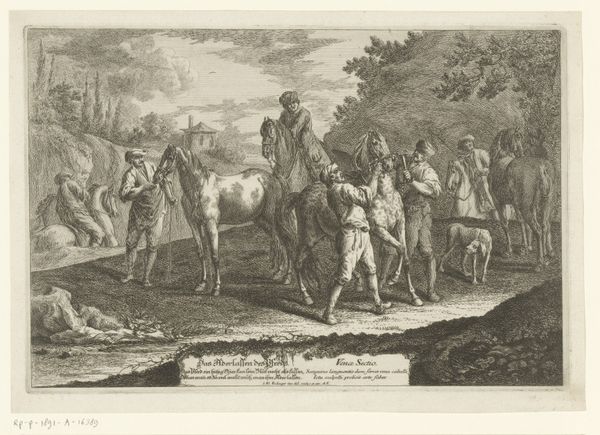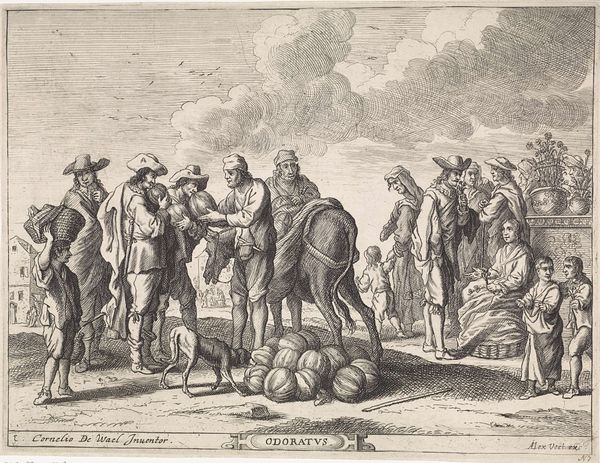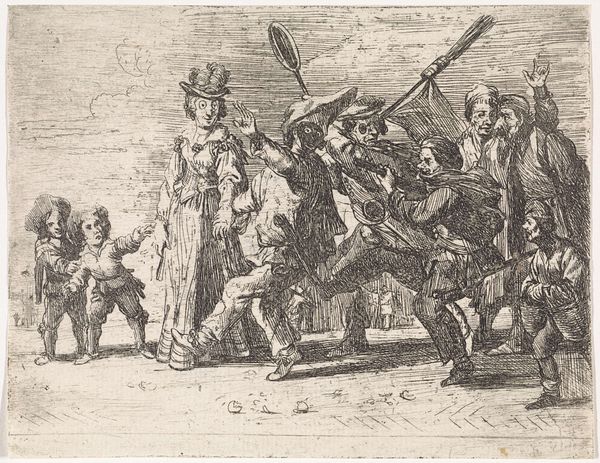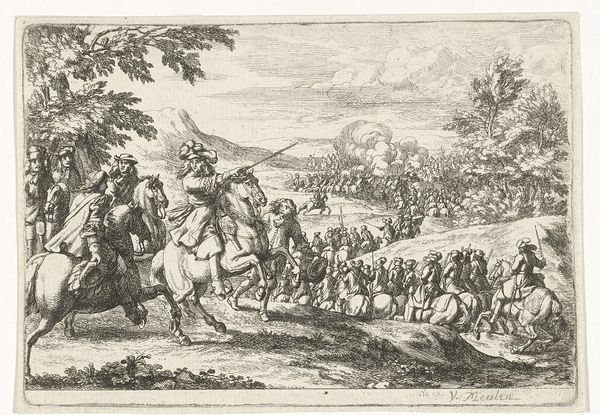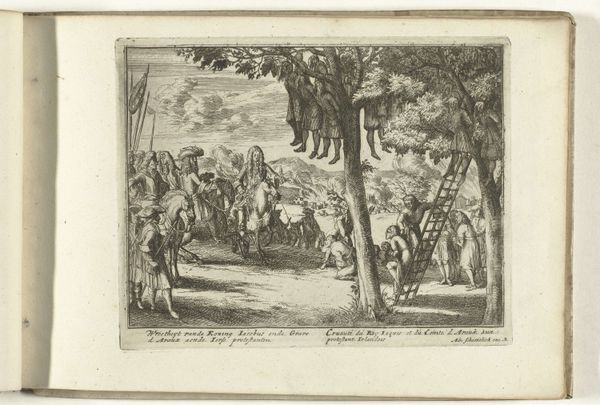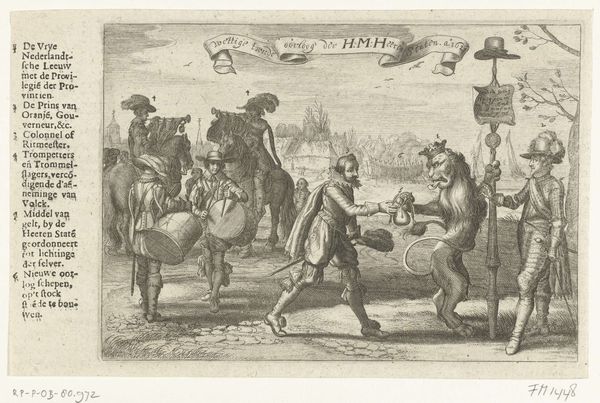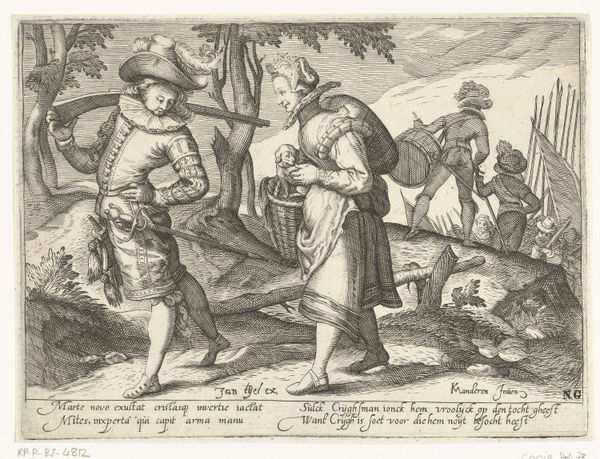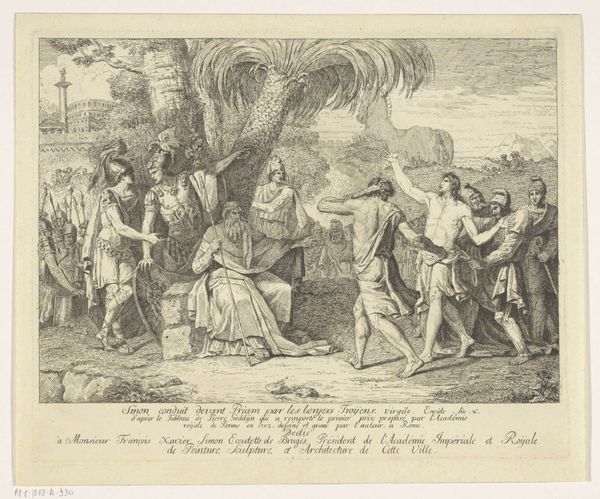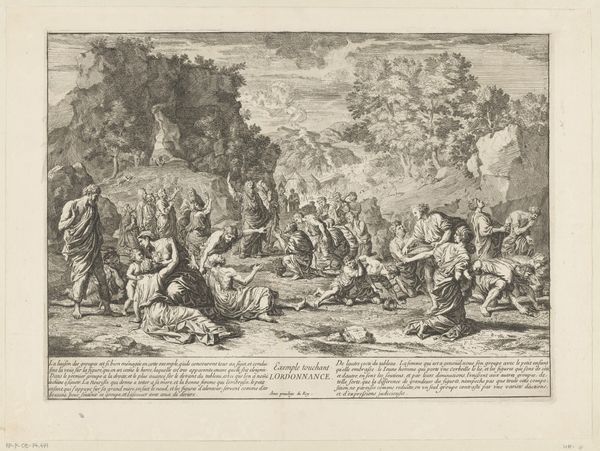
drawing, engraving
#
portrait
#
drawing
#
baroque
#
pencil sketch
#
landscape
#
pencil drawing
#
history-painting
#
engraving
Dimensions: height 145 mm, width 200 mm
Copyright: Rijks Museum: Open Domain
Curator: What strikes me first about Jan van Huchtenburg's "Aanvoerders te paard" – likely made between 1673 and 1709, given the scope of his career – is its textural richness for an engraving. Editor: It's quite stark, isn't it? Somber even. There's a formality here that feels detached from any real conflict; more about displaying power than depicting its consequences. Curator: The engraving medium is vital. Its relative reproducibility allowed wider dissemination of imagery portraying leadership and military campaigns, influencing public perception in ways paintings, for example, simply couldn't at the time. Editor: But at what cost? This idealization of warfare conveniently elides the suffering endured by common soldiers and the communities caught in the crossfire. These leaders appear almost theatrical, elevated above the fray. It serves as effective propaganda, yet problematic history-painting, that further glorified military conflict. Curator: We must consider this drawing within the context of baroque art, of course. Notice the detailed rendering of the horses’ musculature, and how light plays across the fabrics of their rich attires. The act of creation itself involves significant artisanal skill and collaborative work. Editor: While admiring the artisanship, I’m wary of its social function. This image actively participates in creating heroes and perpetuates hierarchies that empower certain people while disenfranchising others based on class, or service. We should acknowledge that Van Huchtenburg's image contributed to a certain kind of social narrative. Curator: I see your point. We should investigate the workshops. The engraver’s skill made it easier for Van Huchtenburg's statement on aristocracy to become popular, spreading images of those aristocrats. Editor: Exactly, that the piece even hangs at the Rijksmuseum speaks to the art and historical world’s participation in these continued stories of oppression and power. Curator: This gives me more to consider concerning the history behind such artistry. Editor: Absolutely, and perhaps we have given listeners more to consider about history too!
Comments
No comments
Be the first to comment and join the conversation on the ultimate creative platform.
